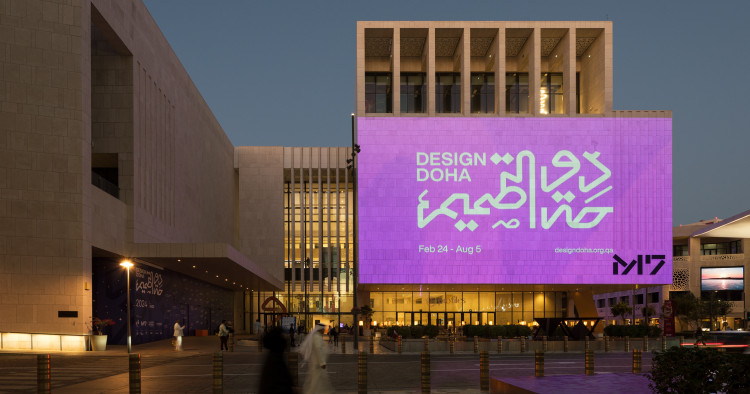Amid a plethora of early spring exhibition openings, artist events, and biennales throughout the Middle East, one clearly stands out in terms of its scale, scope, and thought: the Design Doha Biennial. Envisioned by Qatar Museums under the leadership of Sheikha Al Mayassa bint Hamad Al Thani and carried out by Artistic Director Glenn Adamson and Deputy Director Fahad al-Obaidly, Design Doha ushers in a new phase in Qatar’s long-standing focus on art, culture, and design.
Design Doha creates “a museum environment for Arab designers on an unprecedented scale,” said Adamson during the Biennial’s opening conference. Indeed, Design Doha, which runs until Aug. 5, 2024, spans hundreds of designers across numerous exhibitions. The headline exhibition, Arab Design Now, curated by Rana Beiruti, features 74 designers and studios across two floors in Doha’s M7 space, located in the Msheireb neighborhood and within the Doha Design District. M7 serves as the Biennial’s hub, where exhibitions exploring everything from craft in Uzbekistan, Afghan carpet weaving, emerging designers, posters from the Arab world, and fashion all intersect within one space. The hallmark of Design Doha, however, is the Design Doha Prize. Selected by an international team of judges, the four winners — one from each category of product design, interior design, furniture design, and craft — receive 100,000 Qatari riyals (around $27,500) and a plethora of mentorship opportunities from experts in the design industry.

Arab design, now
Beiruti’s curation of Arab Design Now is an impressive feat that not only showcases the diversity of Middle Eastern design but also the urgent need for Middle Eastern designers to be included in the global design dialogue. As Obaidly notes, Arab Design Now is distinctly “by Arabs, for Arabs” — the exhibition’s scope is centered around what it means to create in the Middle East region today.
Joining ancient and modern craft practices is cardinal to Arab Design Now. Beiruti, in an interview with the author, expresses how “each item has a story to tell about the land, material, craft, and the role of design in preserving our heritage and communicating our contemporary identity and ideas for the future.” Indeed, each designer has an immense “respect for the land and the innovation within,” evident in works reinterpreting animal skins, traditional architectural practices, ceramic techniques, and textiles.
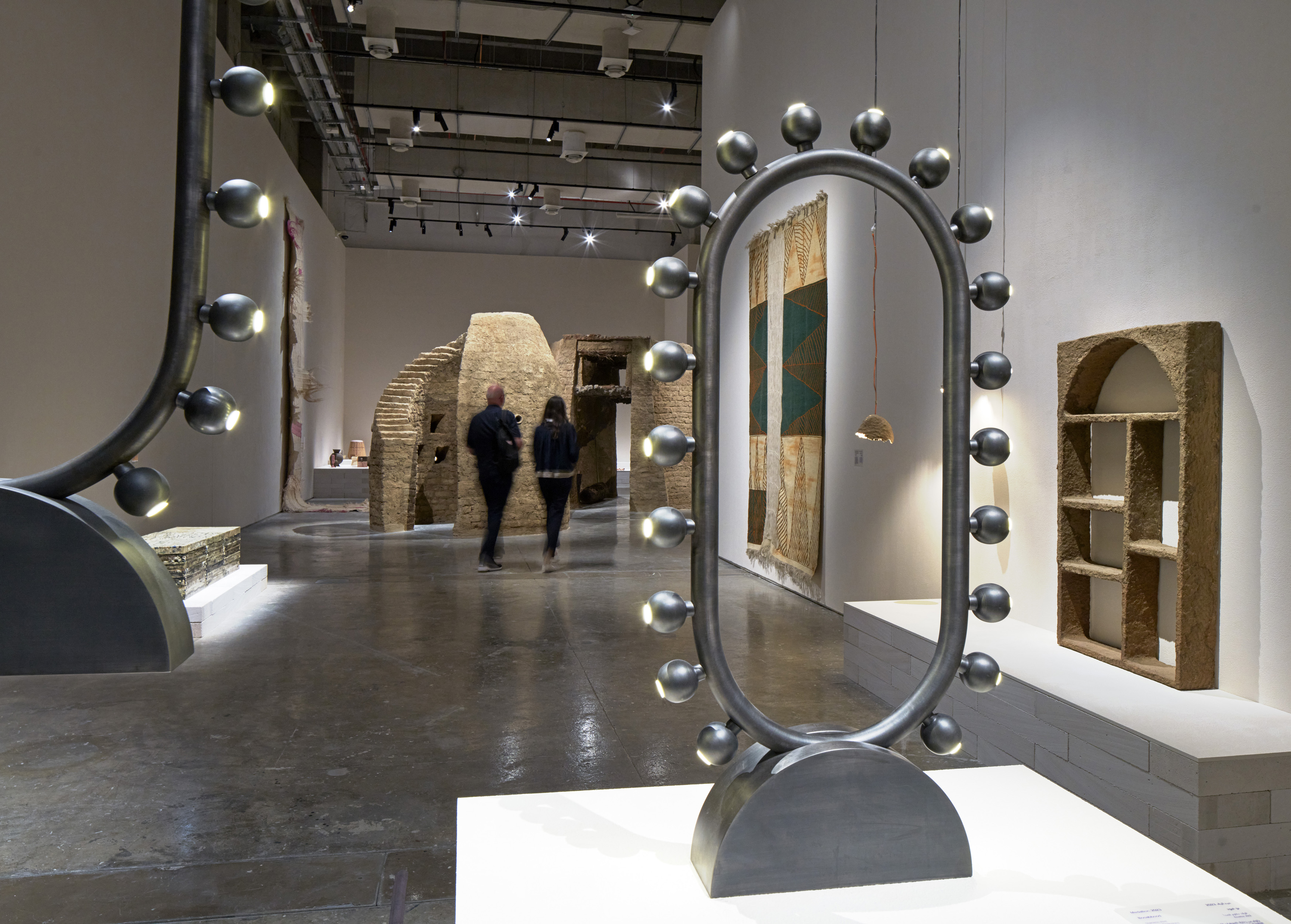
Beiruti curated Arab Design Now along a chronology of craft modernization and dialogue. The exhibition begins with a conversation about the land, specifically desert landscapes and the material from the unique climates of the Middle East. Continuing along the first floor, works then shift to highlighting crafts that utilize material from the land, such as woven baskets, mud structures, and textiles made from sheepskin. References to ancient spiritualities abound, a reflection of the bedrock upon which contemporary Middle Eastern cultures have been built. Taking a massive elevator — which includes an installation — to the second floor, the tone of the exhibition shifts to advanced ways of making, centering contemporary craft practices built upon the foundations of the first floor. Light installations, massive columns, and handcrafted jewelry punctuate the space, forefronting questions around what we make and why we make it. Intricate blown glass and stone furniture challenge values of the home while sculptural textiles toward the end of the exhibition raise questions about language, culture, and values surrounding the family.
The “now” in Arab Design Now is arguably the most crucial part of the exhibition, and the Biennial writ large. Even though the exhibition is a survey with an incredibly broad reach, the cultural values that bind the region together are palpable. Beiruti and the designers exhibited press on the urgent need for Arab and Middle Eastern designers to tell the stories of the Middle East, within the Middle East, from their own perspectives. Design Doha is a premier opportunity for designers from the region to exhibit their work, in their voices, within the region, and Arab Design Now illuminates just how liberating stories can be when retold from indigenous perspectives.
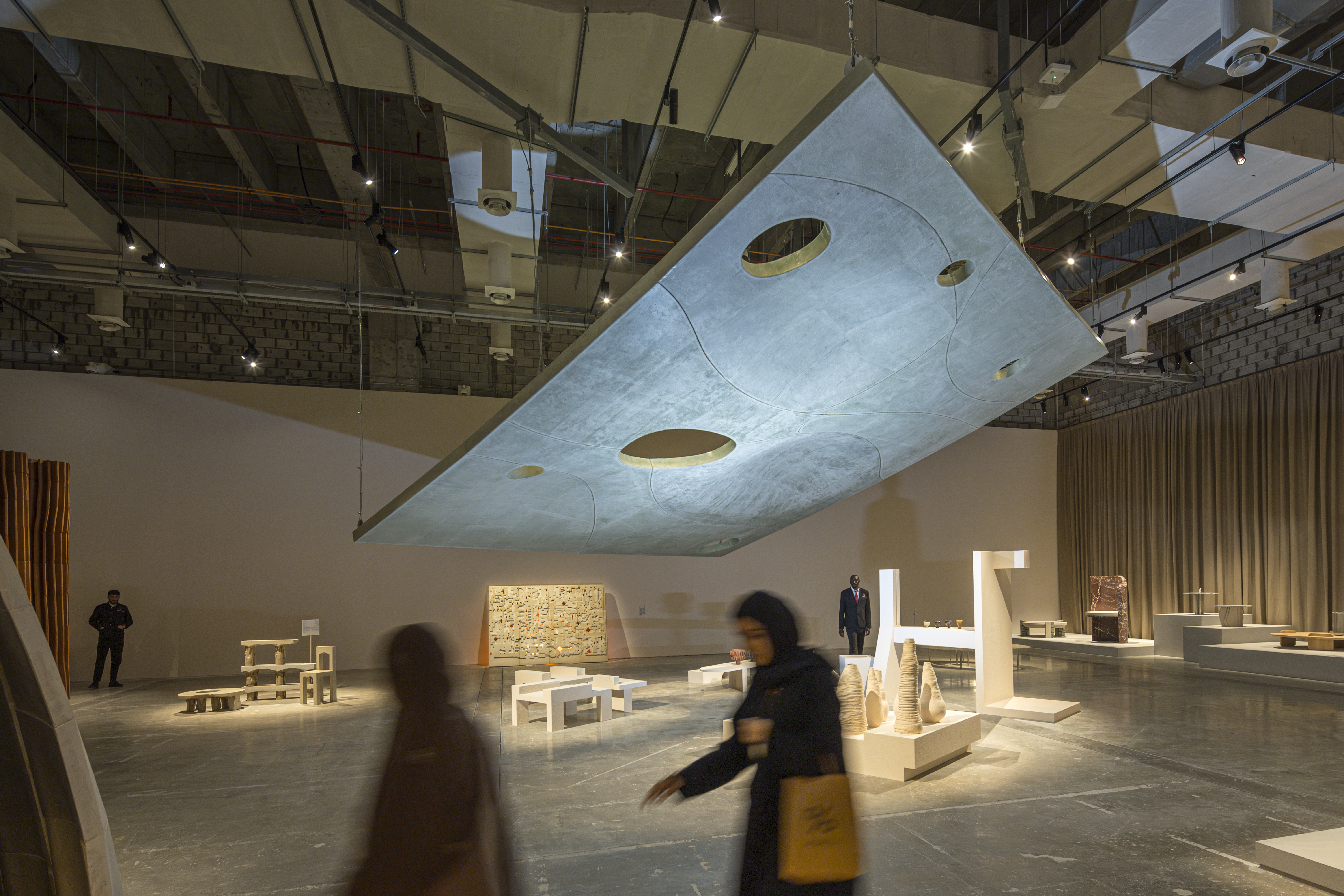
Msheireb Downtown and Doha Design District: Sustainable spaces for the future
The Design Doha Biennial is located in Msheireb Downtown, along a few streets that constitute the Doha Design District. An award-winning development led by Msheireb Properties, Msheireb Downtown is a mixed-use area that revives Doha’s historic architectural core in a modern, sustainable way. A blueprint for urban regeneration, Msheireb Downtown and the Doha Design District are built upon the idea of “design as innovation,” in the words of Shaikha al-Sulaiti, senior manager of interior design at Msheireb Properties. Completely walkable, the exhibitions and public art making up Design Doha are laid out with accessibility in mind to ensure that anyone can visit and view the installations.
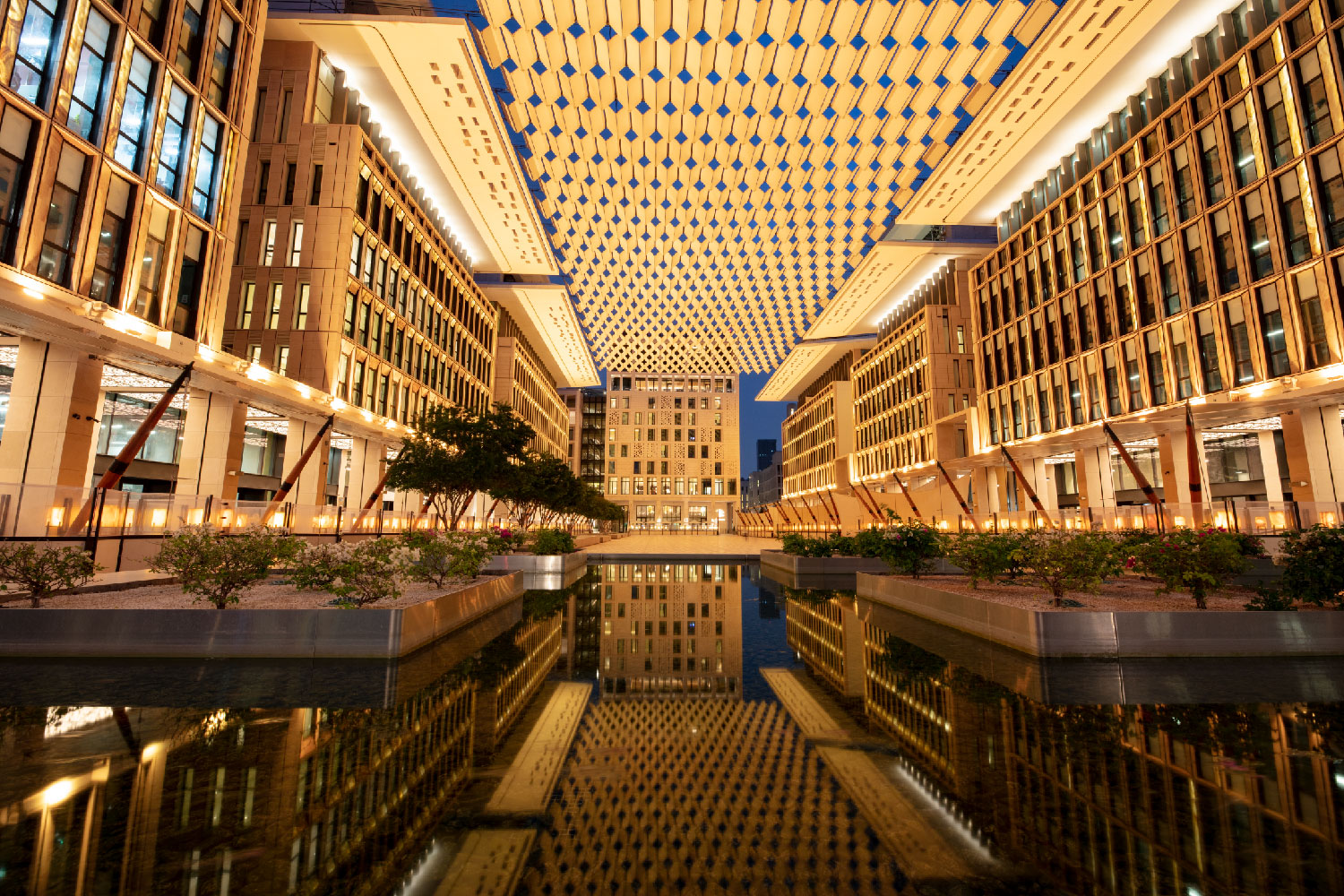
In an interview following the Biennial’s opening, Design Doha Artistic Director Adamson added, “We will continue to activate the Design District and use the Biennial as a platform to amplify its role … for the creative industries.” Indeed, though Design Doha is only in its first edition, the array of public programs and activations throughout the summer will ensure that the Biennial brings sustained creative energy to the newly opened district.
Planning for tomorrow: Design and emerging talent
The most striking contribution of Design Doha is an insistence on young, emerging designers. Whether it be through massive new commissions or the inclusion of numerous emerging designers on the finalist list for the Design Doha Prize, the Biennial parallels the Qatar arts scene’s specific attention to young creatives.
Cultural Kinship, a pop-up design exhibit and retail space, was presented alongside Arab Design Now on the ground floor of M7 in Studio 7. The space makes accessible pieces from designers across the Middle East, showcasing the richness of Middle Eastern and Arab identities through products that can be both viewed and purchased, exhibition-style. One such designer is Etienne Bastormagi, who created a custom series of his signature cast aluminum and brass vases in the colors of the Qatari flag specifically for Cultural Kinship, a testament to the space’s dialogue between traditional and contemporary design practices.
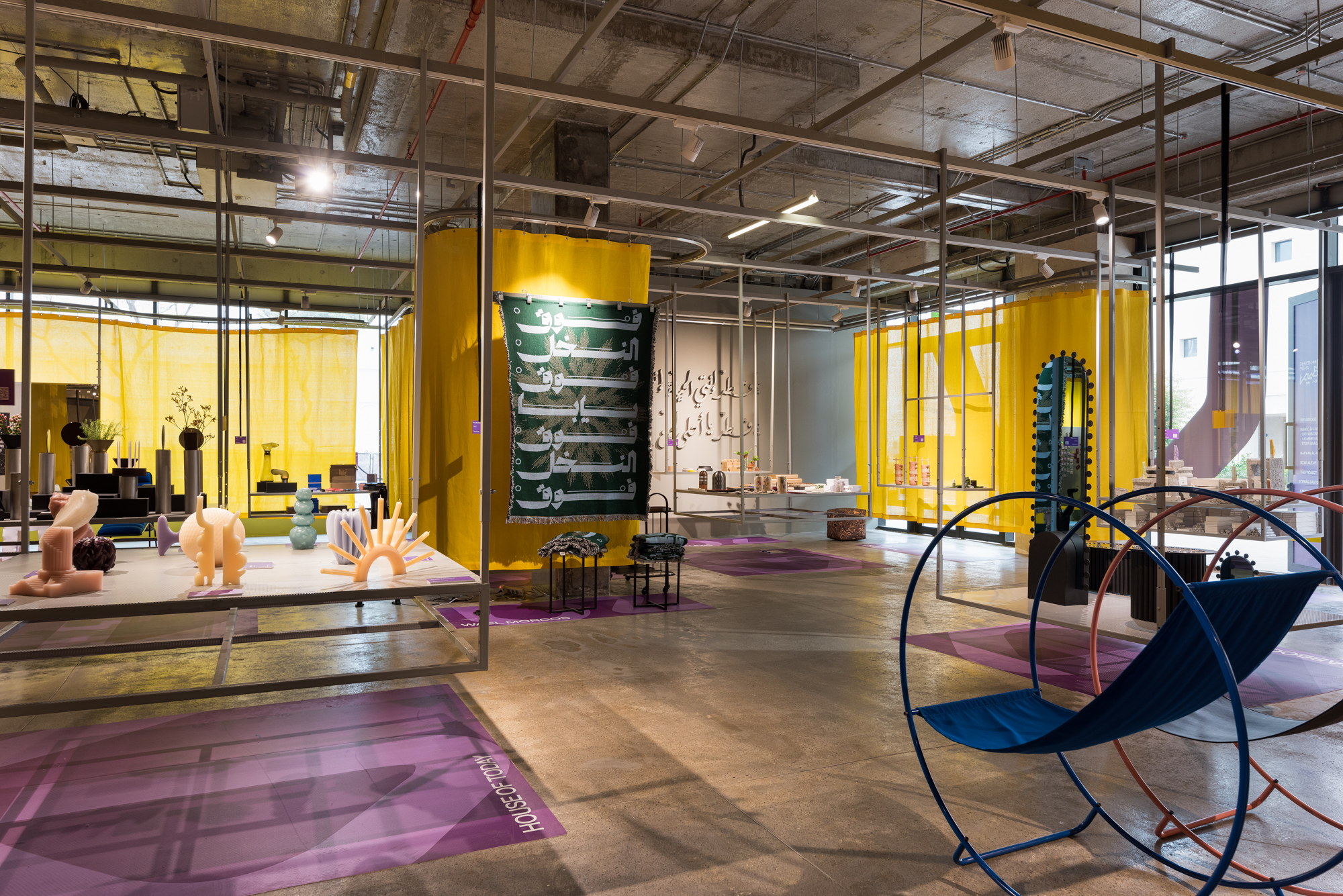
Joe Bou Abboud, founder of Boo Design Studio, and Asma Derouiche, creative director at Studio 7 Qatar, co-curated Cultural Kinship. Reflecting on the importance of Cultural Kinship, Abboud noted that “by making these designs accessible to all, we not only spotlight the exceptional talent within the Arab world but also invite a broader audience to explore and engage with the cultural richness and diversity that these works embody. This aspect of the Biennial is crucial for breaking down stereotypes and fostering a deeper, more nuanced understanding of Arab culture and identity through its artistic expressions. It's about creating a platform where design becomes the medium for storytelling, connection, and global kinship.”
Specifically for emerging artists, Cultural Kinship is about creating meaningful connections, with the additional support of sales income. Abboud continues, “This exposure is not just about sales of souvenirs — it’s about embedding their work in the global narrative of contemporary design and cultural discourse. For many, this opportunity could mean a pivotal moment in their careers, as it places them in front of collectors, curators, and design aficionados from around the world. We hope that the impact of this exposure will reverberate beyond the Biennial, opening doors to collaborations, commissions, and a lasting presence on the international stage.”
As the hub of emerging voices within Design Doha, Cultural Kinship offers important support for those newest to the Middle Eastern design scene. However, other spaces throughout the Biennial are also ripe with young talent and new voices. Liwan Design Studios and Labs, formerly the first officially recognized school for girls in Qatar, hosts a range of design studios for Qatar’s burgeoning creative community. Whether it be the launch of Liwan’s Al Journal, an online publication for Middle Eastern design, during Design Doha’s opening week or the studios of Moroccan creatives visiting Doha as part of the 2024 Years of Culture exchange between Qatar and Morocco, Liwan serves as yet another outpost for creative production in Msheireb.
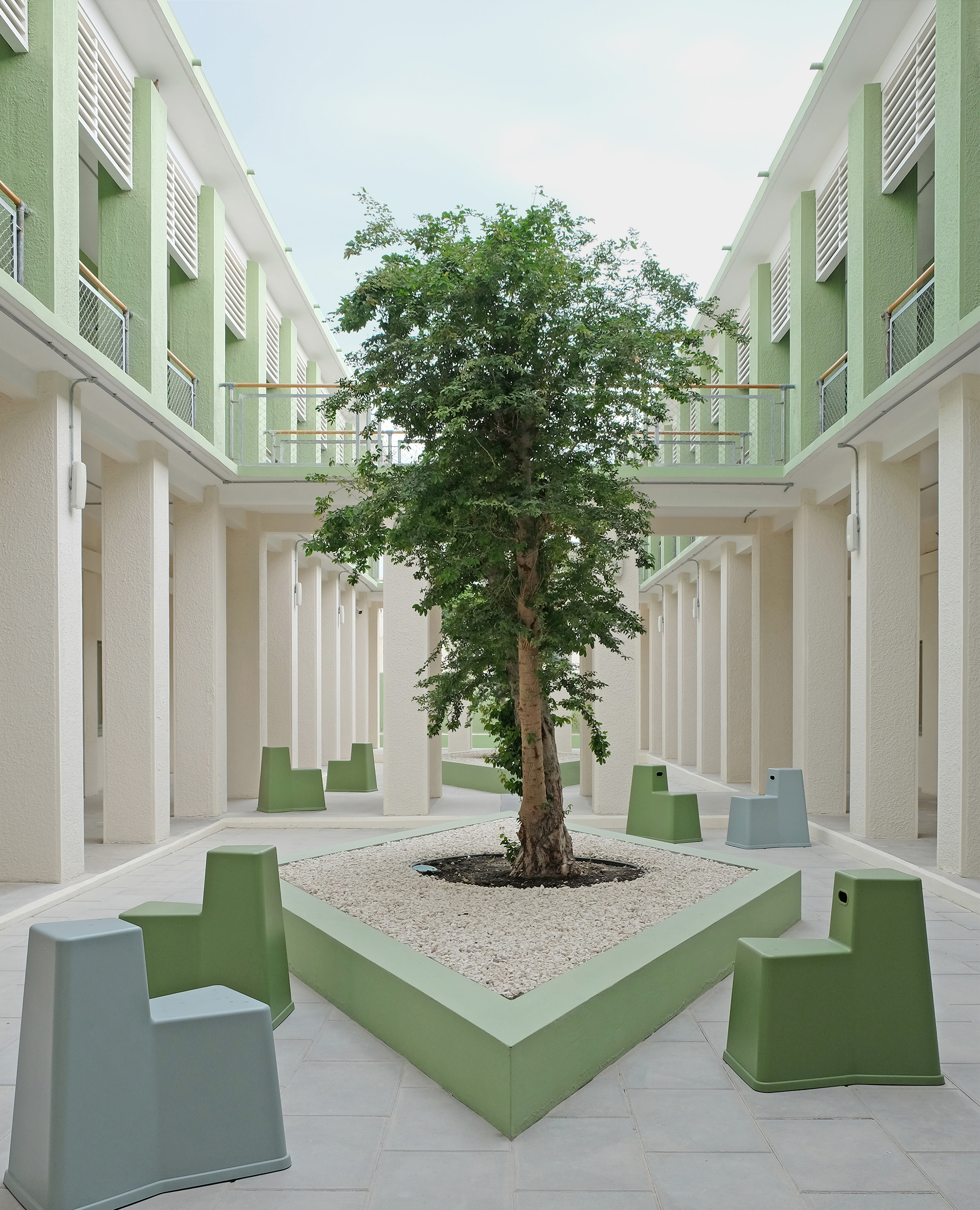
Adamson agrees that emerging voices are an important focus for Design Doha. “There will be many [designers] who are meeting colleagues and future collaborative partners for the first time, so there is a real sense of community building and camaraderie. … Design seems to be a powerful binding agent that forges connections across the whole region.”
All these voices and perspectives coalesce around one key goal of Design Doha: “Arab Design Towards a Better Tomorrow.” As one of the phrases that encapsulates the Biennial, centering Middle Eastern design is paramount to envisioning a future, informed by design, equipped to take on global challenges.
Speaking about how events like Design Doha can help shape potential regional pathways for the better, Adamson remarked,
At a time when there has been such terrible conflict in the MENA region, we feel it is very important to focus on the role that creativity can play in making a better future. This can be at any scale — from the individual studio to the neighborhood, city, nation, region, or even global impact — and can be economic, social, and/or sustainable in nature. … Our goal is not so much to define a single picture or a specific set of solutions, but rather to provide a platform for a diverse range of designers to present their own ideas about a better tomorrow.
At a time when cultural production across the Middle East, particularly in the Gulf, is booming, Qatar Museums’ Design Doha Biennial exceeds expectations. The sheer scale of design representation and programming, the dedication to thought-provoking spaces, and the insistence on cultivating the next generation of Middle Eastern creatives invoke a feeling of hope for a future when the region is known for its creative communities and their collective visions for a better tomorrow.
Ethan E. Dinçer is an active journalist and creative consultant working across contemporary art, fashion, and design. Previously the senior editor of JDEED Magazine and global senior strategist of Based Istanbul, he has published extensively on the creative industry in the Middle East.
Image Courtesy of Julián Velásquez/Qatar Museums/Design Doha 2024
The Middle East Institute (MEI) is an independent, non-partisan, non-for-profit, educational organization. It does not engage in advocacy and its scholars’ opinions are their own. MEI welcomes financial donations, but retains sole editorial control over its work and its publications reflect only the authors’ views. For a listing of MEI donors, please click here.












